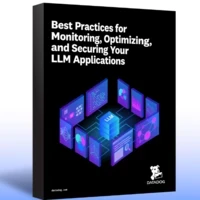
Colin Sempill, managing director of SSE Enterprise Telecoms gives EM360º his perspective on the most important telecoms market trends of 2018.
Sempill says it will be a pivotal year in addressing issues surrounding new connectivity, a changing market dynamic and technical developments such as SD-WAN.
1. 2018 will be the year of new networks
The Ofcom proposal to give rival ISPs “physical access” to Openreach’s existing fibre optic cables has been revoked, with fresh consultations expected in 2018. In the meantime, connectivity providers have been encouraged to find alternative routes to creating new networks. As more network is required, more use will be made of existing assets in 2018. It will see creative and innovative ways to deliver connectivity, such as using sewers, spare ducts, highways, overhead lines and rail networks for alternative network cabling, or physical fixed infrastructure including buildings and street furniture to reduce costs versus new digging projects, in order to bring services closer to customers, and reduce latency. This process of creating new routes to market will undoubtedly gain further traction in 2018 in lieu of unlit fibre access.
2. Credible alternatives challenging the status quo
It is not just the way that networks will be created that will take on a different complexion in 2018, but also who is responsible for building them. With an ever-increasing demand for connectivity, network infrastructures require higher resiliency and improved diversity. In November 2017, Vodafone and CityFibre announced a long-term strategic partnership to bring ultrafast Gigabit-capable full fibre broadband to up to five million UK homes and businesses by 2025. The UK government recently rejected Openreach’s voluntary offer to deliver the proposed 10 Mbps minimum broadband network due, in part, to other providers who were prepared to start legal action to prevent further monopolisation from BT. This goes to highlight the increase in joint ventures that we will see in the UK in 2018 with the aim of solving key challenges relating to the digital economy.
3. The instigators of new network demand
New and evolving technologies such as SD-WAN are fundamentally altering the way that UK enterprises manage their network estate. Entire business communities are being created with connectivity at the heart, while successful digital transformation initiatives fundamentally rely on their network to underpin everyday operations. The rise in edge computing initiatives means that data and services are being positioned closer to customer premises to solve latency issues by decentralising network processing. The constant among these shifts is one fundamental truth – that new, future-proofed networks are a necessity. 2018 will see a steep rise in new networks being created in order to meet demand against this business backdrop. Rural broadband initiatives are one such driver of this change. In 2018, SSE Enterprise Telecoms is committed to ’unbundling’ additional BT exchanges in prime business areas around the UK to deliver high-performance connectivity services. This will result in a significant increase on the third phase of SSE Enterprise Telecoms’ Project Edge from 2017, and will increase the total number of exchanges served by its national fibre optic network to serve more business postcodes.
4. Key market movements which will result in a step-change in telecoms
Developments in the energy sector will also have a profound impact on the need for intelligent, future-proofed telecoms networks in 2018. There is an increased move towards a greater decentralisation of energy production, with consumers beginning to engage proactively in the market with the introduction of smart grids and smart meters in the home. Many homes will evolve to support ‘connected living’, equipped with smart appliances, smart heating and lighting systems and with access to smart electric meters. But underpinning this must be a solid network infrastructure that is capable of allowing the consumer’s home to interact with the smart grid.
5. The 5G spectrum debate continues
The investment required to enable 5G is too great for individual operators to shoulder alone, therefore the market will see alternative infrastructure aggregators emerge – building for multiple service providers and providing a genuine alternative to traditional wholesalers. Today EE has around 45 per cent of the UK’s immediately usable spectrum following its acquisition by BT. And with BT expected to fully merge BT’s consumer arm with EE in the next four years, 2018 will be a crucial year for laying the groundwork for how competitive a 5G auction may be. But the potential dominance of EE/BT as a single player has brought to light a potential monopoly in bidding for 5G auction. Having recognised this, Ofcom has decided to cap the maximum amount of mobile spectrum a British company can own to 37 per cent in order to level the playing field. However, operator Three confirmed the business will seek a judicial review before the UK courts in relation to the competition measures that will apply in the upcoming spectrum auction, with a decision expected to be reached by early 2018. SSE Enterprise Telecoms sees a possibility that the government may decide to licence spectrum in a way that enables pure-play service providers to take a stake outside of the traditional operators.
6. How will changes in technology impact networks?
2018 will prove to be a pivotal year for the adoption of SD-WAN. In 2018 it will make the move to ‘becoming mainstream’. SD-WAN has had a tough battle in moving from a niche tech curiosity to a critical component of an IT strategy. With the continued rise of cloud-based services and applications, the need to adopt innovative technologies like SD-WAN is growing. In 2018 it will move to the mainstream because enterprises are increasingly encountering difficulties in operating performance due to ageing legacy software, and the lesser security capabilities and higher price points of those legacy systems. As the legacy gap widens, and more and more demands are placed on ageing networks, all things ‘software-defined’ will come to the fore. With a software-based approach, networks can be operated using several means of connectivity – be it using the public internet, Ethernet or optical solutions. SD-WAN is becoming increasingly attractive as it means enterprises are only obligated to pay for the level of service and assurance they require.














Comments ( 0 )